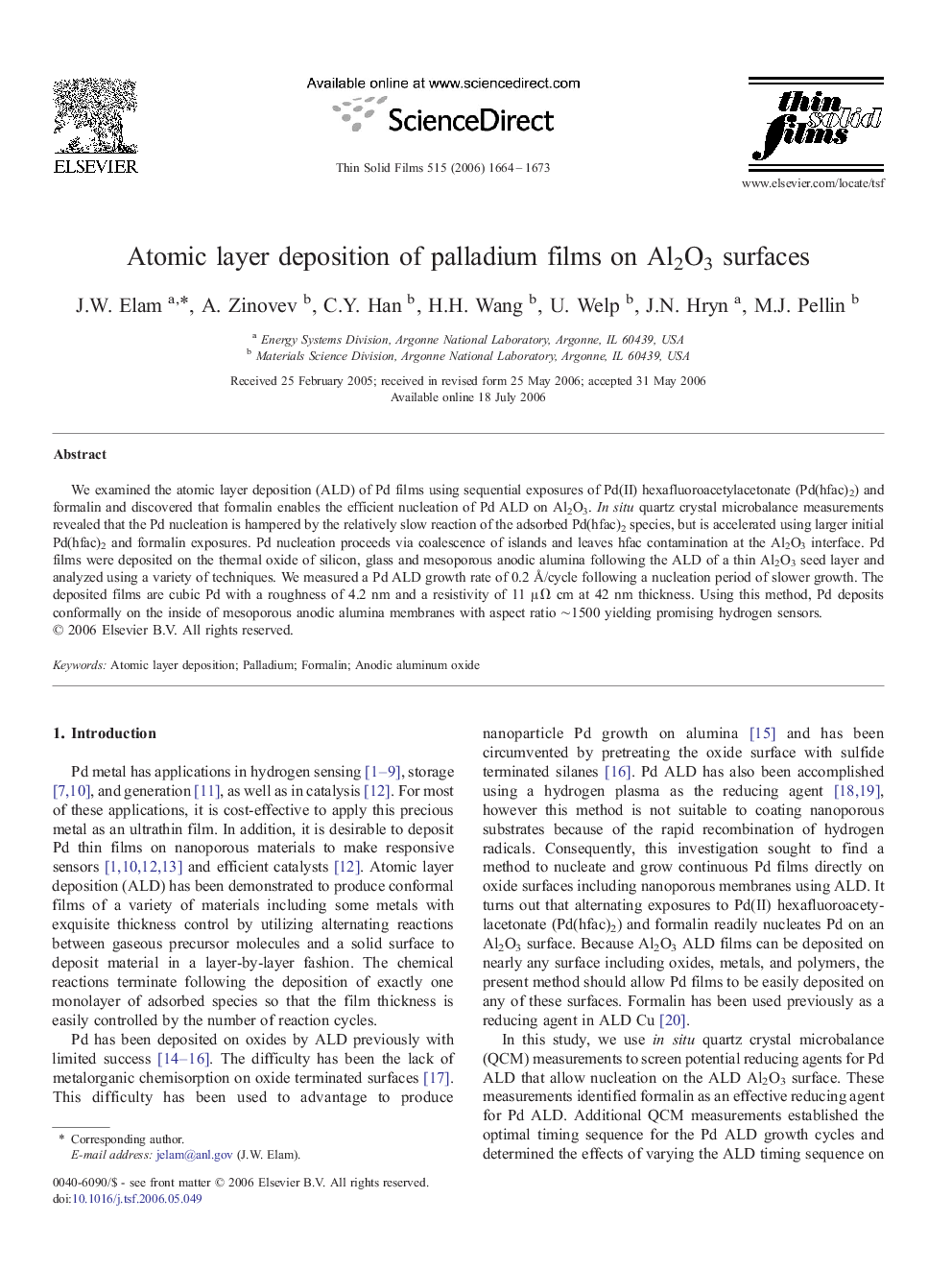| Article ID | Journal | Published Year | Pages | File Type |
|---|---|---|---|---|
| 1675081 | Thin Solid Films | 2006 | 10 Pages |
We examined the atomic layer deposition (ALD) of Pd films using sequential exposures of Pd(II) hexafluoroacetylacetonate (Pd(hfac)2) and formalin and discovered that formalin enables the efficient nucleation of Pd ALD on Al2O3. In situ quartz crystal microbalance measurements revealed that the Pd nucleation is hampered by the relatively slow reaction of the adsorbed Pd(hfac)2 species, but is accelerated using larger initial Pd(hfac)2 and formalin exposures. Pd nucleation proceeds via coalescence of islands and leaves hfac contamination at the Al2O3 interface. Pd films were deposited on the thermal oxide of silicon, glass and mesoporous anodic alumina following the ALD of a thin Al2O3 seed layer and analyzed using a variety of techniques. We measured a Pd ALD growth rate of 0.2 Å/cycle following a nucleation period of slower growth. The deposited films are cubic Pd with a roughness of 4.2 nm and a resistivity of 11 μΩ cm at 42 nm thickness. Using this method, Pd deposits conformally on the inside of mesoporous anodic alumina membranes with aspect ratio ∼1500 yielding promising hydrogen sensors.
